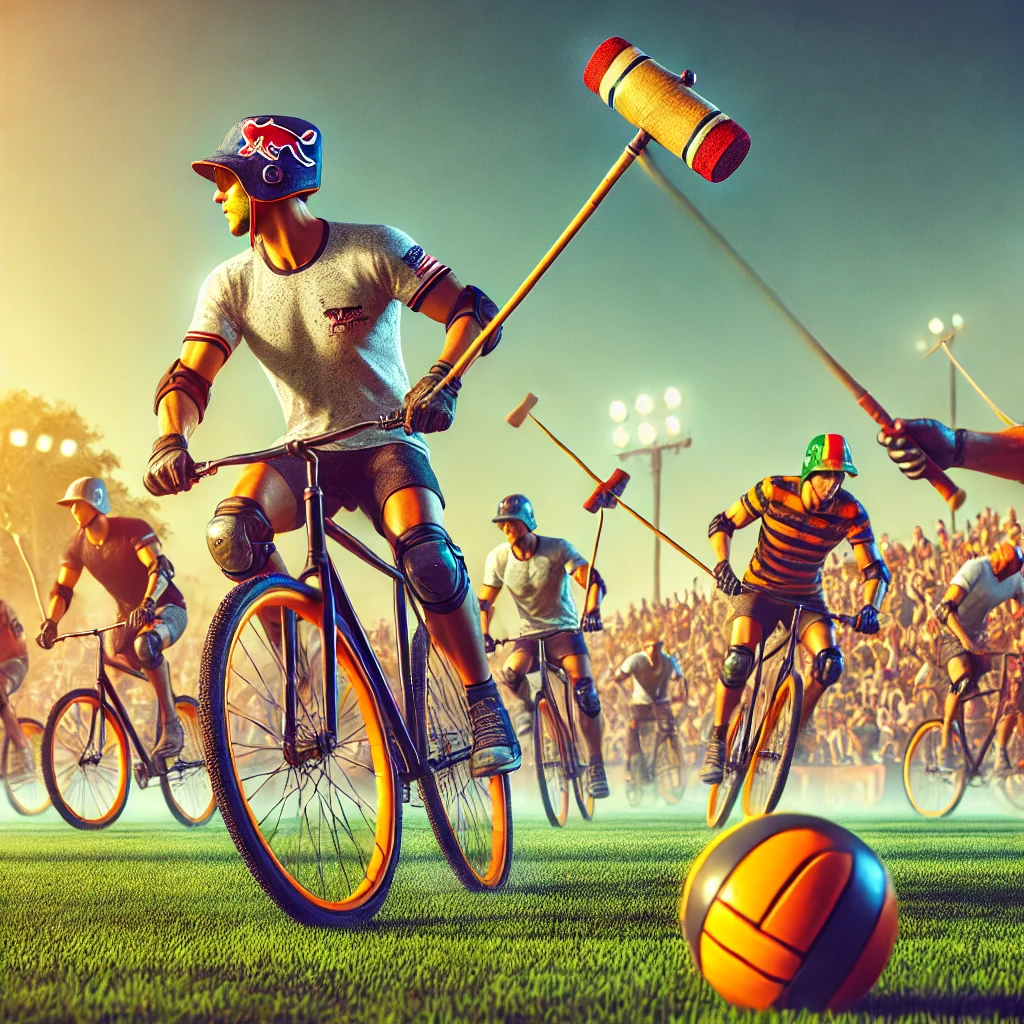
Bicycle Polo: A Fascinating Sport with a Rich History
Bicycle Polo is a unique and thrilling sport that combines athleticism, strategy, and teamwork. It is enjoyed by enthusiasts across the globe. While not as widely known as its equestrian counterpart, this sport boasts a fascinating history and a growing international presence. Its versatility allows it to be played at various levels, from casual games among friends to professional leagues. Whether played on hard courts or grass fields, Bicycle Polo attracts players and fans alike for its fast-paced action and inclusive nature.
The Origin and History
Bicycle Polo was invented in 1891 by an Irishman named Richard J. Mecredy. Inspired by traditional horse polo, Mecredy adapted the game for bicycles. The first recorded match occurred in County Wicklow, Ireland, and featured teams of six players.
The sport quickly gained traction in Great Britain, where it became a popular pastime. By the early 20th century, Bicycle Polo had spread to other parts of Europe and even to India. British soldiers stationed in India introduced the game, where it found an enthusiastic audience. India soon became a hub for the sport, and it remains an integral part of the country’s sporting culture.
Bicycle Polo experienced a decline in popularity during the mid-20th century, overshadowed by other sports. However, it saw a resurgence in the late 1990s and early 2000s, particularly with the emergence of hardcourt Bicycle Polo. This urban adaptation uses smaller teams and paved surfaces, making it more accessible to players in cities worldwide.
Global Popularity
Today, Bicycle Polo is played in numerous countries across continents. Europe, Asia, North America, and Oceania host vibrant communities of players and fans. In India, the sport holds a significant cultural and historical value. It is governed by the Cycle Polo Federation of India, which organizes national tournaments and promotes youth participation.
In the United States, Bicycle Polo gained prominence with the advent of hardcourt games. Cities like Seattle, New York, and San Francisco are hubs for the sport. Enthusiasts regularly gather for local tournaments and community games. Meanwhile, in Europe, countries like France, Germany, and Spain feature strong Bicycle Polo leagues. International tournaments such as the European Hardcourt Bicycle Polo Championships attract top talent and showcase the sport’s competitive side.
In addition to its established presence in these regions, Bicycle Polo is growing in popularity in South America and Africa. Brazil, Argentina, and South Africa are seeing increasing interest, with new clubs and tournaments emerging annually. This global reach demonstrates the sport’s universal appeal and adaptability to diverse cultures and environments.
Amateur Bicycle Polo: Building Grassroots Participation
Amateur Bicycle Polo forms the backbone of the sport, with countless players participating in casual games and local leagues. Community-driven efforts often lead to the establishment of clubs, which serve as hubs for new players to learn and grow.
Youth participation is a significant focus in many countries. Schools and community organizations introduce the sport to young players through workshops and friendly matches. In India, for example, Bicycle Polo is included in school sports programs, encouraging students to develop teamwork and physical fitness. Similarly, grassroots initiatives in North America and Europe foster an inclusive environment for players of all ages and skill levels.
Casual games are often played with fewer formal rules, emphasizing fun and camaraderie. These matches provide an excellent entry point for beginners, who can later progress to more structured formats. Local tournaments frequently include divisions for amateurs, ensuring everyone has an opportunity to compete.
Professional Leagues and Competitions
At the professional level, Bicycle Polo has evolved into a highly competitive sport. Organized leagues and international tournaments showcase the skills of elite players and teams.
In India, the National Cycle Polo Championship is the pinnacle of the sport. Teams from across the country compete in a rigorous format, demonstrating exceptional coordination and athleticism. India’s professional players often represent the nation in international events, cementing its status as a global powerhouse.
Hardcourt Bicycle Polo leagues have gained prominence in the United States and Europe. The North American Hardcourt Bicycle Polo Championship and the World Hardcourt Bicycle Polo Championship are premier events that draw players from around the world. These tournaments feature high stakes, with teams vying for titles and recognition.
In addition to regional and national leagues, smaller circuits and independent tournaments contribute to the sport’s vibrancy. Events like the London Open and the Australasian Hardcourt Championship bring together players from diverse backgrounds, fostering a sense of global community.
Political and Social Significance of Bicycle Polo
Bicycle Polo’s influence extends beyond the playing field, touching on political and social themes. In India, the sport symbolizes a blend of tradition and modernity. It has been used as a tool for community development, bringing people together across social and economic divides.
The sport also promotes sustainability and urban mobility. Hardcourt Bicycle Polo’s popularity in cities highlights the growing appeal of cycling as an eco-friendly mode of transportation. Players and organizers often advocate for improved cycling infrastructure and environmental awareness.
Bicycle Polo fosters inclusivity, with mixed-gender teams and opportunities for players of all skill levels. This inclusive nature challenges traditional norms in sports, promoting diversity and equality. The sport’s grassroots culture further strengthens its role as a community-building activity.
The Rules of Bicycle Polo
Understanding the rules of Bicycle Polo is essential for players and fans. While variations exist between grass and hardcourt formats, the fundamental principles remain consistent.
- Teams and Equipment: Each team consists of three to six players, depending on the format. Players use specially designed mallets and standard bicycles, often modified for better control and durability.
- Field and Goals: Matches are played on a rectangular field or court with goalposts at each end. Grass fields are larger, while hardcourt games use smaller areas.
- Starting Play: The game begins with a “joust,” where players race from their respective ends to strike the ball first.
- Scoring: A goal is scored when the ball passes through the opposing team’s goalposts. Players must strike the ball with the mallet’s broad end.
- Contact and Fouls: Physical contact between players is limited to shoulder-to-shoulder pushes. T-boning (colliding perpendicularly) and other dangerous actions result in penalties.
- Foot Down Rule: If a player’s foot touches the ground, they must exit play and tap a designated area before rejoining.
- Match Duration: Games typically consist of two halves, each lasting 15-20 minutes, with a short halftime break.
These rules ensure fair play and safety while maintaining the sport’s fast-paced nature. Local variations and informal settings may adapt these guidelines to suit specific needs.
The Future of Bicycle Polo
Bicycle Polo’s future looks bright, with growing participation and recognition worldwide. Efforts to include the sport in international multi-sport events, such as the Asian Games, could further elevate its profile. Technological advancements in equipment and training methods also promise to enhance the playing experience.
Grassroots initiatives and youth programs will remain critical to sustaining the sport’s growth. By nurturing talent and fostering community engagement, Bicycle Polo can continue to thrive as a dynamic and inclusive sport.
Conclusion
Bicycle Polo is a testament to the enduring appeal of innovation and adaptability in sports. Its rich history, global reach, and inclusive spirit make it a truly remarkable activity. From its origins in 19th-century Ireland to its modern iterations on urban hardcourts, the sport has captivated generations of players and fans. Whether played casually or professionally, Bicycle Polo embodies the joy of competition and the power of community.




